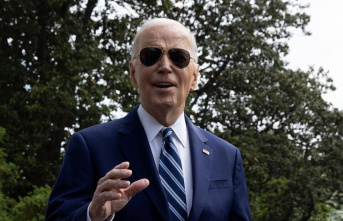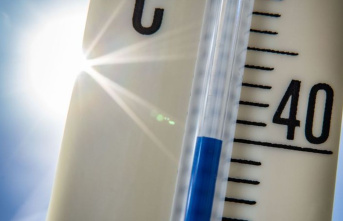According to the United Nations, there are a few "glimmers of hope" in the fight against climate change, but they are far from sufficient. The goal of limiting global temperature rise to 1.5 degrees by the end of the century will not come close to being achieved. It could be closer to 2.5 degrees warming. This emerges from a report published by the UN Climate Change Secretariat in Bonn on Wednesday. It is based on the evaluation of the climate protection plans of the signatory states of the Paris climate agreement.
According to the calculations, CO2 emissions will increase by 10.6 percent by 2030 compared to 2010. This is an improvement on last year's estimate that the increase by 2030 would be 13.7 percent. Last year's report also concluded that emissions would continue to rise after 2030. After evaluating new data from the 193 countries, this is no longer to be feared, so emissions are likely to fall. However, the forecast decrease in CO2 emissions after 2030 is far from sufficient to achieve the 1.5 degree target.
Tighten plans - and also implement them
"In order to keep this goal within the realm of possibility, the national governments must tighten up their climate protection plans now and implement them over the next eight years," warned UN climate chief Simon Stiell. It is disappointing that since the Glasgow climate conference last year, only 24 countries have presented adapted plans, although everyone agreed that this had to happen now.
"Government decisions and actions must reflect the urgency and magnitude of the threat we face - and the short time we have left to avoid the devastating consequences of uncontrollable climate change," said the politician from the Caribbean island state of Grenada. At the next climate conference next month in Egypt, politicians must definitely seize the opportunity to significantly intensify their efforts.
However, it is questionable whether much can be achieved in Egypt. Federal Foreign Minister Annalena Baerbock (Greens) recently said that the conference might even come to an end without a final agreement between the participating countries. When asked which minimum goal the federal government was pursuing at the climate conference, Baerbock said: "That it will take place. You never know in this world situation."
Efforts need to be redoubled
Even in the EU, the climate protection measures are not yet sufficient to meet the target of reducing emissions by at least 55 percent by 2030. In order to achieve the climate and energy goals for 2030, the annual progress in reducing emissions and energy consumption and in expanding renewable energies must be more than doubled, wrote the EU Environment Agency EEA in a report also published on Wednesday.
Emissions must drop by an average of 134 million tons of CO2 equivalents per year - the average for the years 1990 to 2020 was only 52 million tons. "We cannot continue at the pace of the past," said one of the authors of the EEA report, Melanie Sporer.
EU emissions developed in the opposite direction in 2021, which was completely wrong from a climate protection perspective: According to preliminary data, greenhouse gas emissions in the European Union rose by an estimated five percent last year compared to 2020. According to the EEA, emissions increased again, especially in transport, industry and energy supply.
The EEA sees the main reason for this in the economic recovery after the pandemic, which led to lockdowns, production stops in many factories and far-reaching restrictions on public life in 2020. Compared to the pre-Corona year 2019, emissions in 2021 were around six percent lower.
UN report press release UN Climate Change Secretariat












